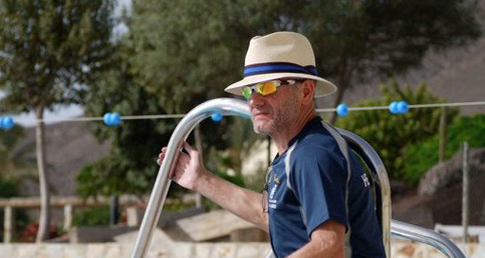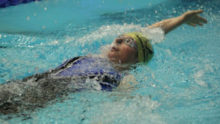
GB Masters’ London 2016 countdown
January 15, 2016It is just 20 weeks to the LEN European Masters Championships in London and if you are just starting your preparation, Otter Coach, Steve Bratt has some useful advice for your London 2016 countdown:
London 2016 countdown with Steve Bratt
If you’ve had some time out of the water, then start by working on the basics. First plan the events you want to swim and what type of training you will need to do.
Two weeks of preparation, then a block of endurance work, working on speed in every session.
In the preparation phase you need to work endurance, flexibility, streamline and rehearsing turns and finishes. Starts can be practiced by push starts in the water with dive starts introduced later.
Most of your work should be based around aerobic capacity improvements with short-rest interval work on freestyle and drills and kick sets on your main stroke. If you are an individual medley (IM) swimmer focus on single set stroke work and not too much work on straight IM work during this phase. Speed work over short 15m distances around 45 repeats in a week should be a good target to aim for.
Always warm up well before every session with particular focus on keeping your rotator cuff healthy.
Rest and adaptation are equally as important as training, so don’t overdo it, especially if you’ve been out of the water for some time. Try to train in the correct energy zone to get the most benefit from your workout.
Heart rate is the best way to know if you are in the correct zone, remember as you get older your maximum heart rate is generally lower. Be careful to try and work out your maximum heart rate with a test set at some point.
Calculate maximum heart rate (HR)
There are a few generic formulas for working out your maximum heart rate:
HRmax = 220 – Age is the best known
An alternative for trained athletes is:
Male athletes: HRmax = 202 – (0.55 x age)
Female athletes: HRmax = 216 – (1.09 x age)
Example of a test set to assess your maximum heart rate for 200m+ swimmers
2x100m build to maximum effort, rest interval 15 sec. Measure heart rate.
3x100m target PB plus 4 seconds for each 100, rest interval 10s. Measure heart rate.
Generally aerobic work should be between 30 and 70 beats below your maximum heart rate (low level aerobic to aerobic development). As an example if you are 50 years old with a maximum heart rate of 180 beats per minute your aerobic range is 110 to a 150. Every person is unique, so try to confirm your own maximum HR before applying any numbers.
So sets between 200m to 1500m with short rest between swims according to your event should be your target. Make sure you have kick and drill sets in every session. Aim to practice every turn as if you are competing: if you rehearse with poor technique, then you will race with poor technique.
Race practice is also critical: try to compete at least three or four times as you countdown to London 2016 so you can rehearse your event in competition.
 Masters Swimming Hub
Masters Swimming Hub





